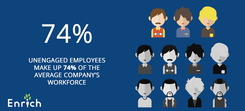Related Posts
Employers and Organizations
How Student Loan Debt is Affecting Baby Boomer Employees
Last Update: July 25, 2019
With more than 70 percent of employers now stating that financial wellness initiatives for their employees are a top objective,1 there are many boardroom conversations about what this means and how to accomplish this goal.
During such discussions, the topic of student loan debt, which now tops credit card debt, arises.
With 44 million borrowers owing $1.5 trillion in student loans,2 companies are bound to have employees who struggle, so financial wellness solutions are considered.
Although these initiatives typically revolve around the millennial generation, a recent Guardian report, College Debt in America,3 found a surprising statistic that may require employers to rethink their financial wellness strategies in this area.
Baby Boomer Student Debt on the Rise
Although student debt is rising among all generations, according to the Guardian report,4 those age 60 to 69 have experienced a 72 percent increase in their loan balances over the last five years, the largest area of growth for student loan debt.
In a majority of the cases (75 percent5), these are not personal student loans but loans taken out for children or grandchildren.
Further statistics from the Federal Reserve,6 the Consumer Financial Protection Bureau,7 and the GOA8 show the magnitude of the problem for those nearing and entering retirement:
- $88.9 billion in Parent PLUS loans in addition to an unknown amount of private loans
- Average Parent PLUS balance of $25,600 – triple the average balance 25 years ago
- 73 percent of baby boomers with student loan debt also cosigned for a private loan
- In just 10 years, the number of borrowers over age 60 grew by 2.1 million
- 40 percent of student loan borrowers over age 65 are in default
- Borrowers over the age 65 who have Social Security checks garnished grew 540 percent between 2002 to 2015
- 114,000 borrowers age 50 or older had their Social Security benefits garnished due to defaulted federal student loans
- Unfortunately, as a result of student loans, many baby boomers find themselves unable to retire.
The Impact of Student Loan Debt
In order to pay down student debt, older Americans are tapping into their retirement savings, taking out loans against their 401(k)s, making up the difference through credit card spending, and working long past the traditional retirement age.
As a result, 52 percent of baby boomers9 state that student loan debt keeps them from meeting necessary financial goals.
Two reports, one from the National Council on Aging10 and the other from the Joint Center for Housing Studies11 found the following about seniors straddled with debt:
- 23 percent do not make needed home and car repairs
- Reduce transportation spending by 67 percent
- 15 percent cut their pills in half
- Cut healthcare spending by 51 percent
- 14 percent skip meals
- Reduce food spending by 37 percent
- Additionally, bankruptcy among seniors increased by 204 percent in the last 25 years12
For those who simply cannot afford to make the monthly student loan payments, defaulting on the loan appears to be the only option.
However, defaulting on a government loan, even with a declared bankruptcy, does not discharge the amount due.
Instead, the loan continues to grow, increasing the balance with late fees and service charges.
Once a borrower reaches retirement age, the government can begin to garnish their Social Security benefits up to 15 percent. Yet, even garnished benefits may not take care of the debt.
The GAO study13 shows that despite collecting $1.1 billion through Social Security benefit garnishment, 71 percent of collected money was applied to fees and interest only, with 53 percent of baby boomers getting nothing applied to their student loan principal.
This led to more than one-third of those with garnished benefits still being in default after five years with nearly half of borrowers owing more than when the garnishment began.
Finally, 13 percent of those with garnished benefits died with student loan balances.
Helping Employees Stop the Cycle
Employers have an opportunity to help stop the debt cycle by providing appropriate financial wellness benefits to their employees.
One solution is an employee student loan benefit program, which helps employees pay their student loans quicker through employer-assisted contributions and access to student loan refinance programs.
With 70 percent of employees14 with student loan debt rating finances as the major source of stress, and few workers feeling confident about their financial future, financial education is an imperative ingredient for a healthy, happy workforce.
Employee financial education programs can help baby boomers learn skills and options to keep student loan debt from wreaking havoc with their retirement.
They can learn techniques such as:
- Refinancing student loans to get a lower interest rate and/or lower monthly payments
- Transferring loans to their child or grandchild to eliminate responsibility for the debt
- Loan forbearance or deferment to stop payments for a specific period of time
- Switching the loan to an income-driven repayment plan based on income rather than the loan amount
- Getting released from a cosigned loan
- Taking advantage of college savings or student loan debt benefits
Additionally, a holistic financial wellness program can also help younger generations learn about debt and retirement so they can avoid the issues currently facing baby boomers.
The final solution to the student debt crisis will be multifaceted, involving employers as well as government agencies and educational institutions.
Company financial wellness programs like Enrich are one avenue for assisting employees of all generations with their ever-changing financial needs.
To see the Enrich Financial Wellness Platform in action, watch our demo video here.
1 - https://www.guardiananytime.com/gafd/wps/portal/fdhome/insights-perspectives/emerging-trends/college-debt-study
2 - https://www.newyorkfed.org/medialibrary/interactives/householdcredit/data/pdf/hhdc_2018q4.pdf
3 - https://www.guardiananytime.com/gafd/wps/portal/fdhome/insights-perspectives/emerging-trends/college-debt-study
4 - https://www.guardiananytime.com/gafd/wps/portal/fdhome/insights-perspectives/emerging-trends/college-debt-study
5 - https://economichardship.org/
6 - https://www.newyorkfed.org/medialibrary/interactives/householdcredit/data/pdf/hhdc_2018q4.pdf
7 - https://files.consumerfinance.gov/f/documents/201701_cfpb_OA-Student-Loan-Snapshot.pdf
8 - https://www.gao.gov/assets/690/681722.pdf
9 - https://www.guardiananytime.com/gafd/wps/portal/fdhome/insights-perspectives/emerging-trends/college-debt-study
9 - https://www.ncoa.org/resources/older-adults-debt-brief/
10 - https://www.jchs.harvard.edu/sites/default/files/harvard_jchs_housing_growing_population_2016_chapter_4.pdf
11 - https://www.brookings.edu/research/the-looming-student-loan-default-crisis-is-worse-than-we-thought/
12 - https://papers.ssrn.com/sol3/papers.cfm?abstract_id=3226574
13 - https://www.gao.gov/assets/690/681722.pdf
14 - https://www.guardiananytime.com/gafd/wps/portal/fdhome/insights-perspectives/emerging-trends/college-debt-study
Featured Posts

Employers and Organizations
3 MIN
10 Simple Ways Benefits Managers Can Recession-Proof Their Employee Benefits Package

Employers and Organizations
3 MIN
3 Reasons to Make After-Tax Contributions to Your Retirement Plan

Employers and Organizations
4 MIN
Financial Information vs Employee Behavior Change: Which Is More Important for Your Company’s Financial Wellness Program?

Employers and Organizations
3 MIN
Does Your Employee Financial Wellness Program Take Mindset Into Consideration?
Related Posts

Employers and Organizations
2 MIN
Your Boss May Soon Pay Off Your Student Loans

Enrich News
3 MIN
How Credit Unions are Engaging Millennials

Financial Institutions
3 MIN
Is Student Loan Debt a Roadblock to Retirement Savings?
